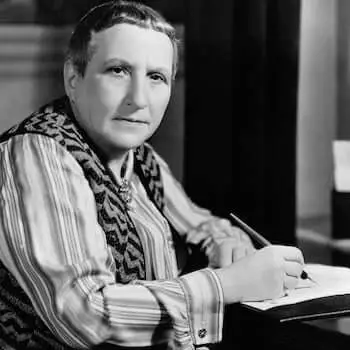APAD: A rose is a rose is a rose
The meaning most often attributed to 'a rose is a rose is a rose' is the notion that, when all is said and done, a thing is what it is. This is in similar vein to Shakespeare's 'a rose by any other name would smell as sweet'. However, that's not the interpretation given by the author of the phrase.
The line is from Gertrude Stein's poem Sacred Emily, written in 1913 and published in 1922, in Geography and Plays. The verbatim line is actually, 'Rose is a rose is a rose is a rose':
Rose is a rose is a rose is a rose
Loveliness extreme.
Extra gaiters,
Loveliness extreme.
Sweetest ice-cream.
Pages ages page ages page ages.
.

American novelist, poet, playwright, and art collector, Gertrude Stein.
When asked what she meant by the line, Stein said that in the time of Homer, or of Chaucer, "the poet could use the name of the thing and the thing was really there." As memory took it over, the thing lost its identity, and she was trying to recover that - "I think in that line the rose is red for the first time in English poetry for a hundred years."
Stein was certainly fond of the line and used variants of it in several of her works:
- Do we suppose that all she knows is that a rose is a rose is a rose is a rose. (Operas and Plays)
- ... she would carve on the tree Rose is a Rose is a Rose is a Rose is a Rose until it went all the way around. (The World is Round)
- A rose tree may be a rose tree may be a rosy rose tree if watered. (Alphabets and Birthdays)
- Indeed a rose is a rose makes a pretty plate. (Stanzas in Meditation)
